




Summer is here and we are starting to harvest veggies!








Everything is growing! Here are some images from this week.






























Some days are easier than others. Being flexible helps turn a frustrating day into a productive and happy one! The zero turn is fixed and the garlic bed is weeded and hay put down around the garlic.
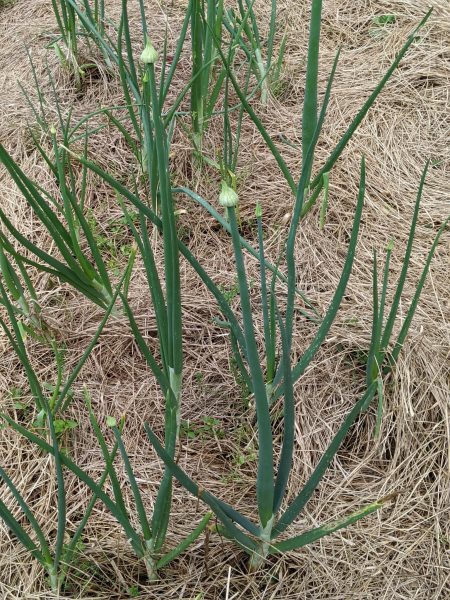
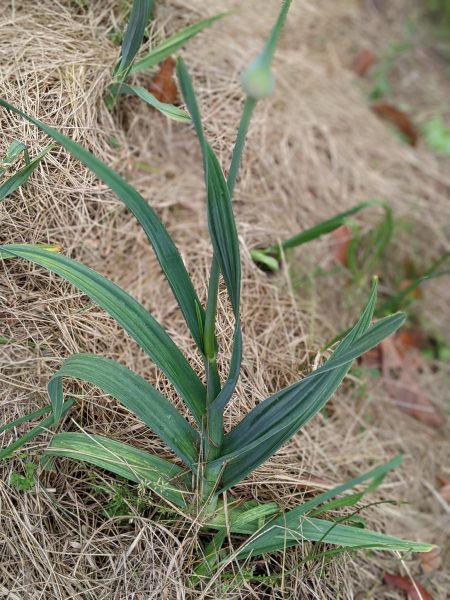
The blackberries are starting to fruit!
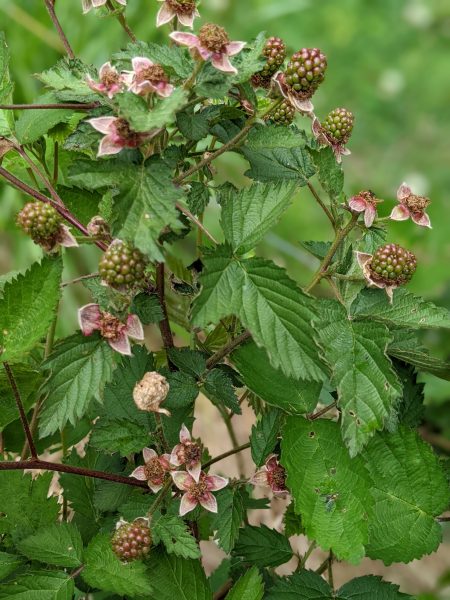

Lets take a walk around the farm and see what is growing!
One of the topics that comes up in the video is the concept of imposing my will on the farm. Planning for the growing season requires creating a calendar of when to do what. Different crops need to go in at different times so that requires planning. We need to have the ground ready to plant. This year is very much a building year so we had infrastructure that had to go in. We put in:
We have also been working to add additional perennials this year
The garden beds are shaping up. They spent the last three months under a silage tarp but are now mostly ready to plant. The elderberries, figs and peaches are growing.
We also did work in the food forest area that we started building in 2021. We added a trellis for the blackberries and covered the hugelkultur mound with a silage tarp for 3 months to help suppress weed growth this summer. We also put down a biodegradeable paper around the bushes and trees and covered it with hay.
These have been great successes. Which would not be possible without everyone that has helped out on the farm. Our farm is structured as a communal community farm. We have another family that helps out. We share the harvest with them. Having their help has made this possible.
One of the challenges of accomplishing these things is timing. It is critical to have materials (hay, biodegradeable paper, plants, hardware and lines for the drip irrigation, and a bunch of various item) in place and ready to install. The next step is to have a plan where the materials and manpower are ready to go. I developed a calendar for the year. Then each week we have a list of items to accomplish. The list makes helps everyone to plan their time and know what tools to bring. It also helps us to work as a group and sometimes to break down in to 2 groups to work on some items in parallel.
Weather is always a factor with outdoor activities like hiking or camping. Weather is an even bigger factor with farming. Not only the weather on the day you plan to work in the fields but also the weather leading up to the days you have planned to work.
If the fields are wet, then you may have to wait for them to dry out before preparing beds or planting. If the soil isn’t warm enough then seeds won’t germinate. A late frost can kill young plants. Maybe the tractor breaks down in the middle of the field (been there).
It takes effort and organization to
Days and weeks before you
So you have all this lined up and on the calendar. But that doesn’t mean it will happen. Weather, equipment issues, or other frustrations can keep your plans from happening.
My desire and my decision to do X,Y, and Z on a certain day doesn’t mean it will happen. My will to accomplish work on the farm is totally subservient to reality of circumstance. There are many things that can delay plans or even cancel them. Its really easy to assume that because I planned something and got everything ready, then it will happen. The life lesson comes when it doesn’t . Farming will teach that life lesson again and again. I’m not able to impose my will on the farm. It works better if I set up goals and plan for success but not get upset if those plans don’t work out. Humility wins. Farming, or even gardening, will definitely teach you humility, patience and the value of a backup plan / rain date.
Parting words: plant a garden!

Our food forest is starting to grow with the warmer weather. Here are some pictures
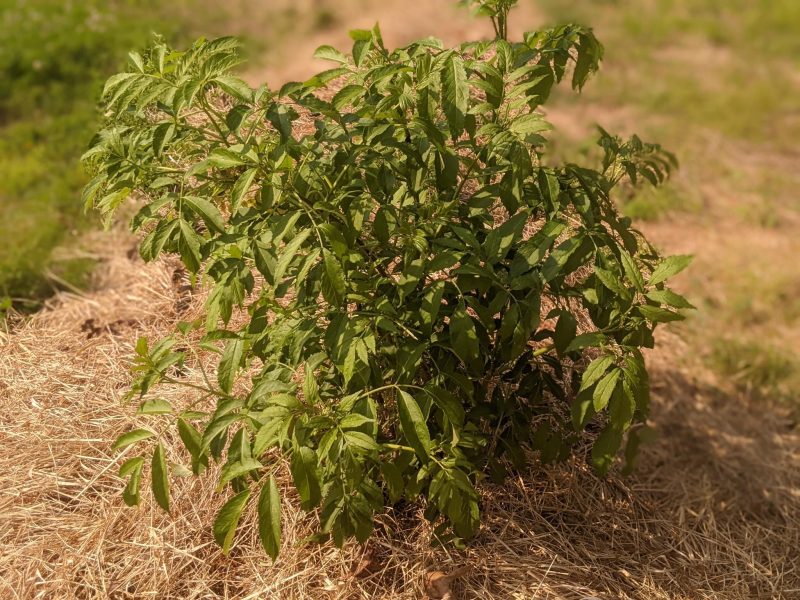
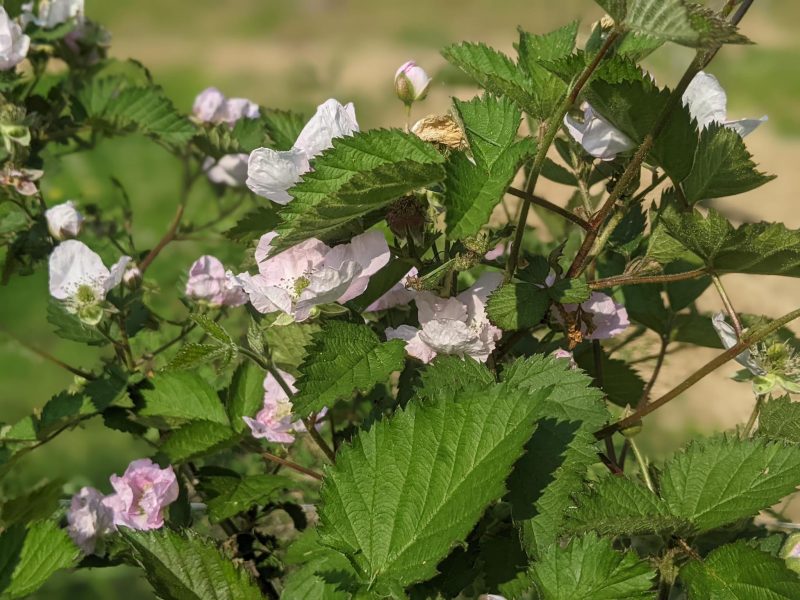

What Can You Do
This year has been a challenging year when it comes to supply chain issues and inflation. The rising price of gas and food has impacted all of us at some level. People with the least disposable income getting hurt the worst. At some point, rising food prices will lead to political instability and riots. Rising food prices were what caused the Arab Spring riots. Americans are no less susceptible to the effects of rising food and fuel costs.
Here are some ways to fight back against the rising cost of food
These are doable action items. Don’t let excuses hold you back!
audentes Fortuna iuvat – Fortune favors the Bold

The last two days have been a blur. We have been busy. Even with 4 people on the farm working hard, we still have more stuff to do before everything is been planted.
We are on still on a rapid learning curve as we work hard. The garden area in the pictures below was pasture for decades so we had to work to plow up the grassy area and then build new beds.
The BCS tiller was also a new piece of equipment for us. The biggest challenge we’ve had with the BCS is laying out beds so that the rows come out the width that we want. Our BCS tractor has the 5.5 inch extensions added to the the 749 tractor. This makes the tractor wider by 11 inches.
The vegetable garden beds are on a sloped face. To help minimize any erosion issues during rain events, we kept a 10 foot ribbon of grass between each plot. Each plot was laid out to have 2 rows per plot (30″ wide rows) with an 18″ wide walkway between each row. When I added up 3 walkways plus a quantity of 2 of the 30″ wide rows, then we should need a plot that is 9.5 feet wide. In practice, it just isn’t working out that way. I suspect we’ll have to till and hill a plot and measure to see where I’m off in my estimation of the total width of each 2 row plot. There is definitely a learning curve to becoming a better farmer.
We just installed rows of trellis for pole beans and tromboncino squash. We are using a curved trellis for the tromboncino squash and pole beans. I keep seeing videos and picture of the curved and over trellis configuration, so we wanted to see at try and find out if it works as well as we keep hearing. The curved trellis (when covered with tromboncino squash) should provide provide shade for the young rhubarb.
One of my projects for this summer is to install posts in the field, near the rows, where we can hang the cattle panels (used in the trellis) this fall after we take the trellis down and store it for the winter.
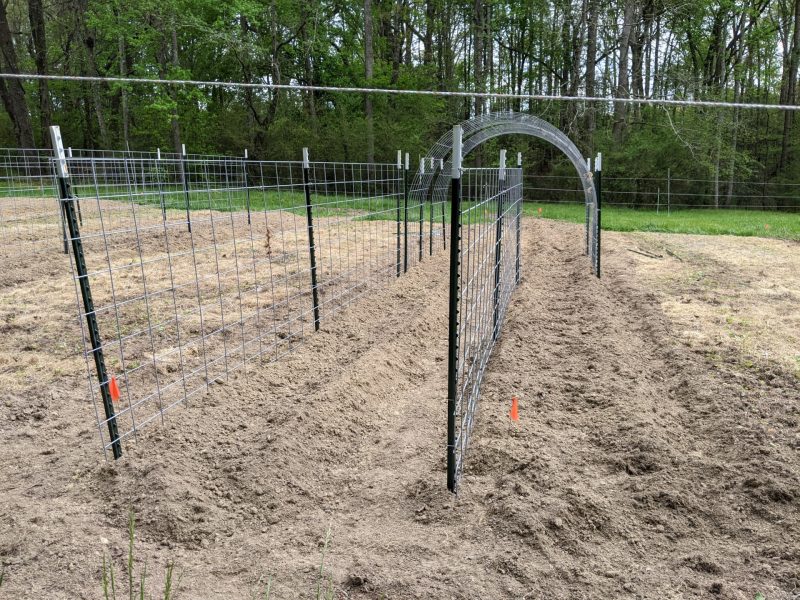
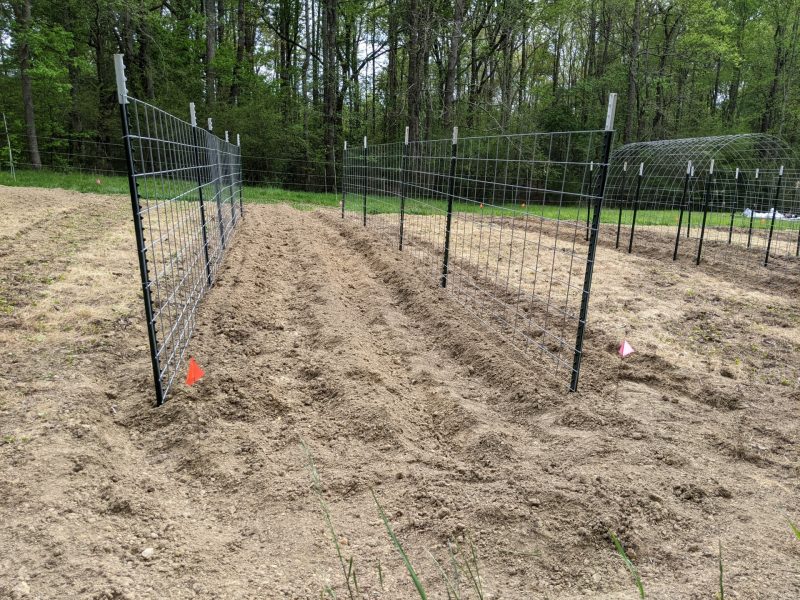
One of the projects this month was to map and tag each fruit bearing tree and bush. My wife took this project and ran with it. We now have a map that shows the location of each fruit bearing tree and bush, indicated by a unique tag number. The unique tags number are recorded in a spreadsheet. Information about each plant is recoded with the tag number, such as variety and date planted. This will also us to track historical data about each plant. This data is also useful when we propagate cuttings, allowing us to properly identify plants for sale.
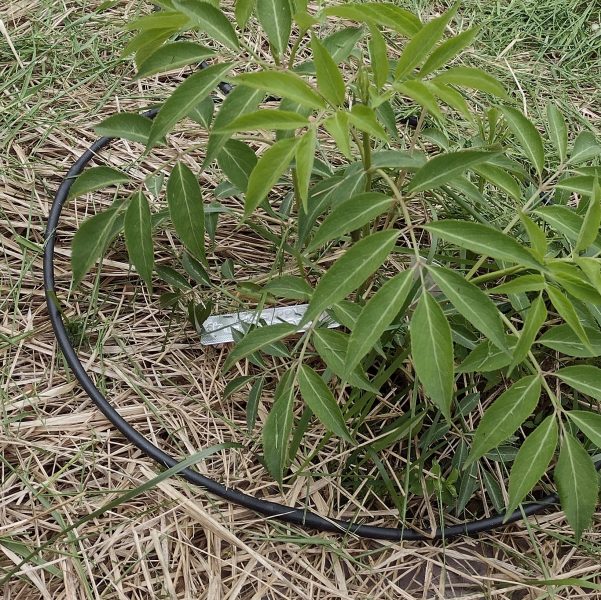

It is the time of year where you never know if it is going to be an 80 degree day or a 40 degree day. We are still getting ready to start planting our summer garden. This was also the first time I mowed the grass for the season. More and more plants are starting to grow. The drip irrigation system is still a work in progress. Once we have the planting beds made then we can put down the drip tape and test the system.
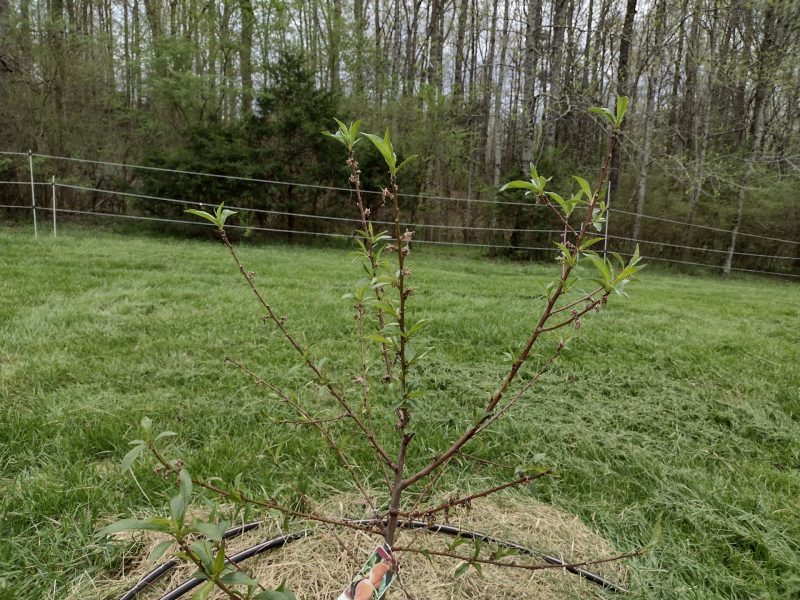
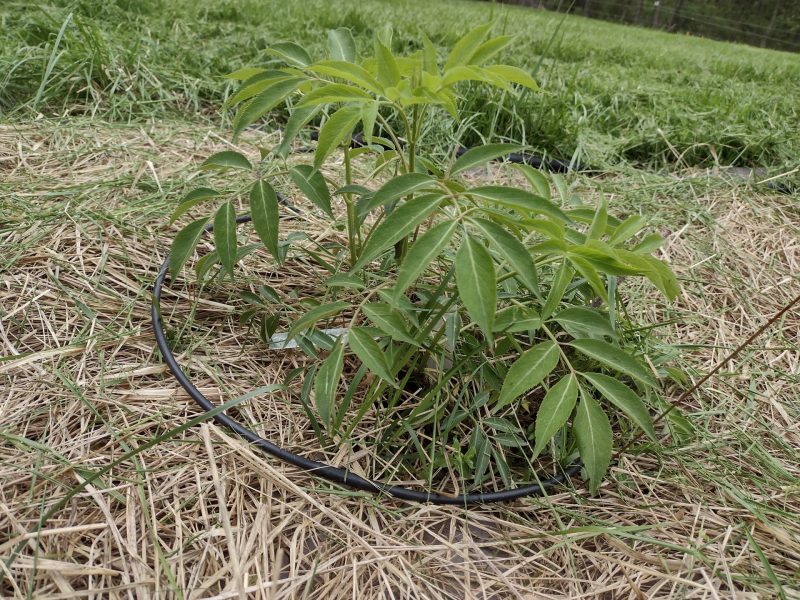
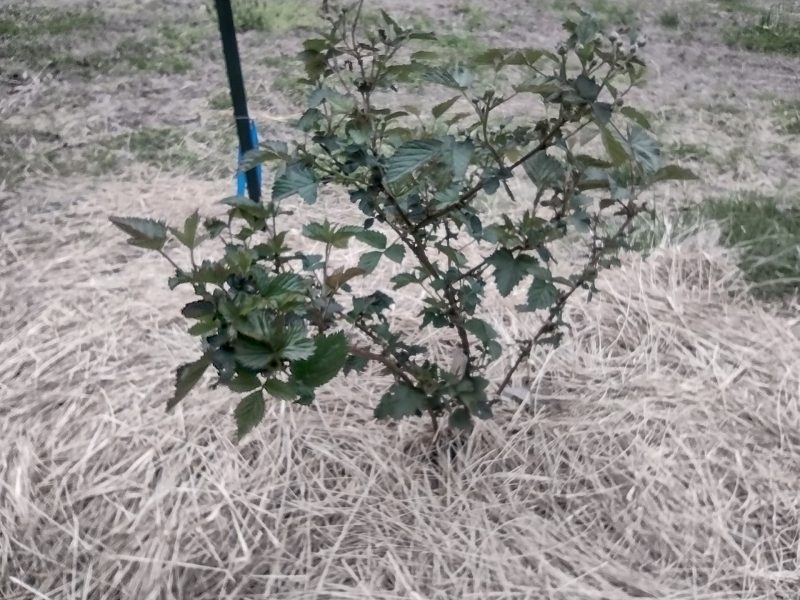
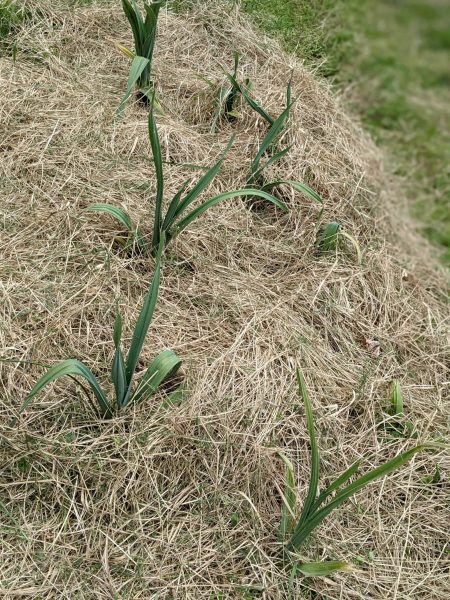
We had a fairly mild winter so the weeds started growing early in the garlic beds. This year we put down hay twice to try and suppress weed growth. Hopefully we can avoid a lot of weeding this way. I was pleasantly surprised that our garlic beds survived our neighbors cows getting loose and trampling the plants earlier in the winter.
We have several patches of wild American Mandrake. It grows in the shady areas. I’m hoping that we can actually try some of the fruit this year. That would mean that we would have to time picking it just right. If we wait too long the squirrels and deer will beat us to the ripe fruit.
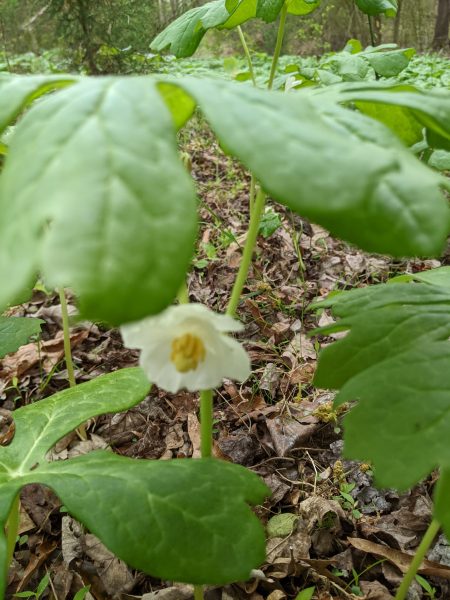
The weather on Saturday was kinda crazy. It started out fairly warm and then just kept getting colder.
We had planned to plant beets, peas and radish. The plan was to pull back the tarps and build beds to plant in. The silage tarp has been down for several weeks. Last weekend we added more tarps before the rain started. The plan was to roll back the tarps and build beds for the beets, peas and radish. Then we could plant in dry ground. Sounds like a good plan.
However, it was not a good plan. When we pulled back the silage tarp and the other tarps, what we found was some very wet ground. Once again I was unable to impose my timeline on the farm. I say that as a joke. Our transition from backyard gardening to a small scale farm has been quite a learning experience. I’ve found time and time again, that we can’t impose our timeline and our will on the farm. Instead we have to be flexible and understand that everything happens in due time.
Our food forest area consists of a mulberry trees, elderberries, blackberries, raspberries and figs. There is also a hugelkultur mound at the edge. We started our food forest last year in a field with very established grass. The grass is good because it holds the soil in place but creates a few issues. The grass competes with the bushes and trees for resources. The grass also hides the drip irrigation lines and emitters, making it easy to hit with the lawnmower or weed eater. Keeping the grass cut in the immediate are around plants makes it easy to damage the plants if you get too close with the lawnmower or weed eater.
We spent the day putting down a biodegradable weed blocker. The weed blocker we use is a paper mulch from Chatham Farm Supply in Pittsboro, NC The weed blocker is manufactured by www.7springsfarm.com .
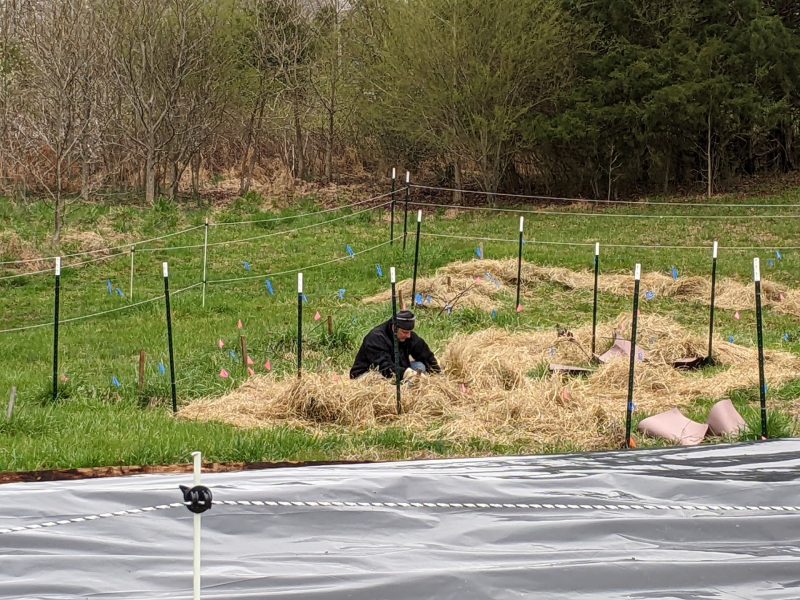
We originally tried doing a long length of paper, but the wind kept that from working. Doing small pieces worked much better and were easier to manage on a windy day.
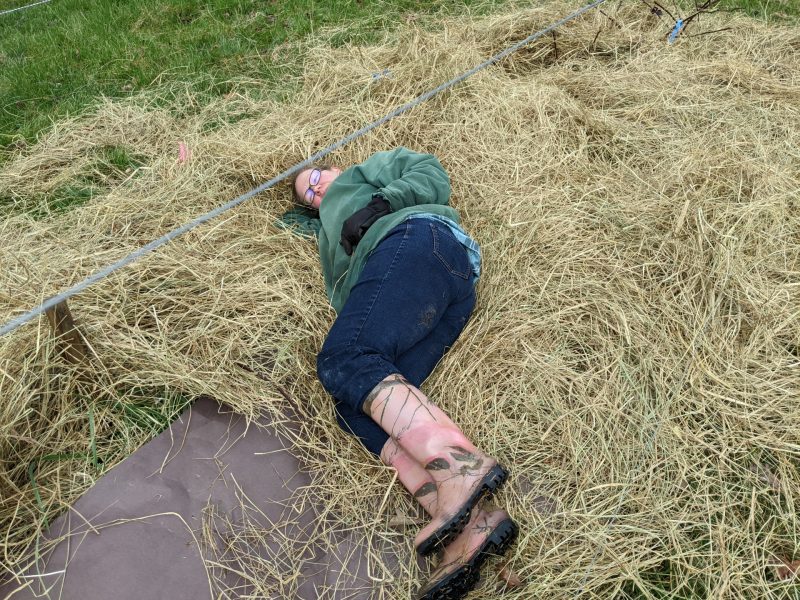
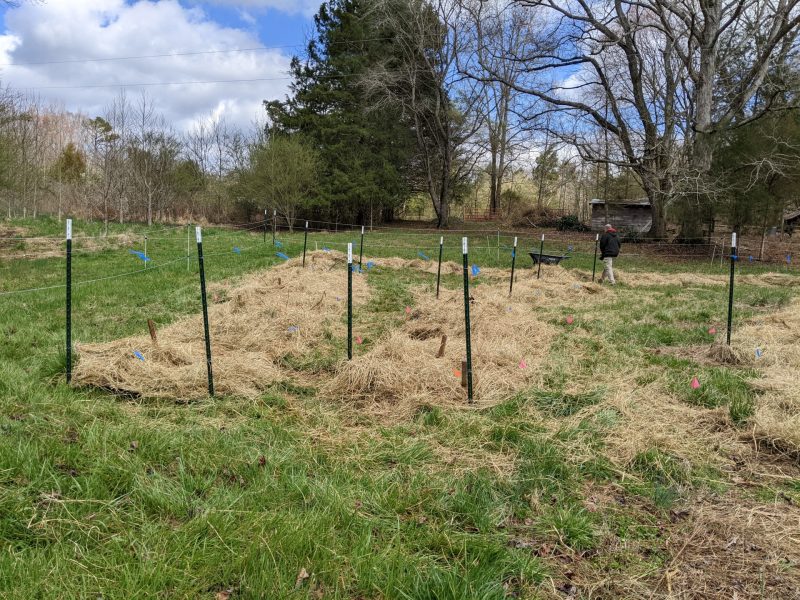
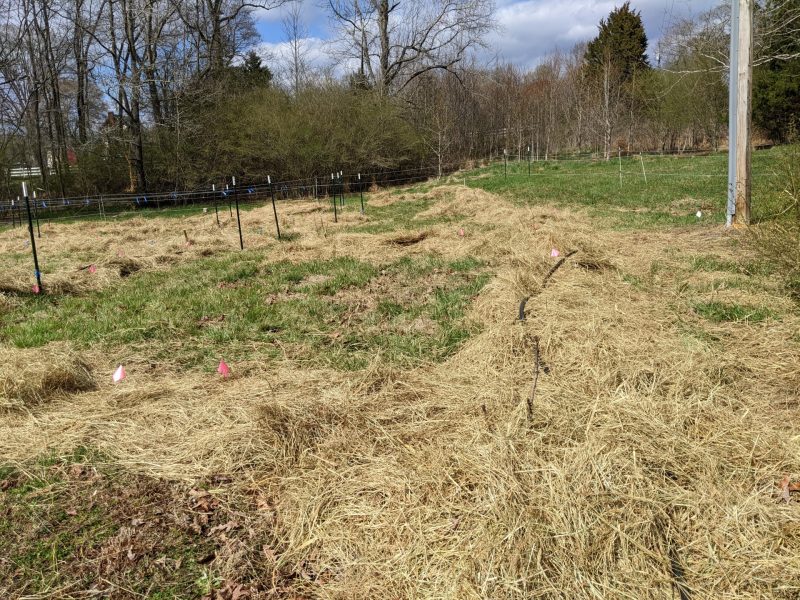
It is really important to make sure that before using hay or stray in your garden, you find out what chemicals were sprayed on the hay as it was growing. Some of the chemicals used in the production of hay (which is typically used for livestock food) are safe for live stock but may kill the plants in your garden. Some farmers assume that safe for livestock means safe for the garden, but often that isn’t the case.